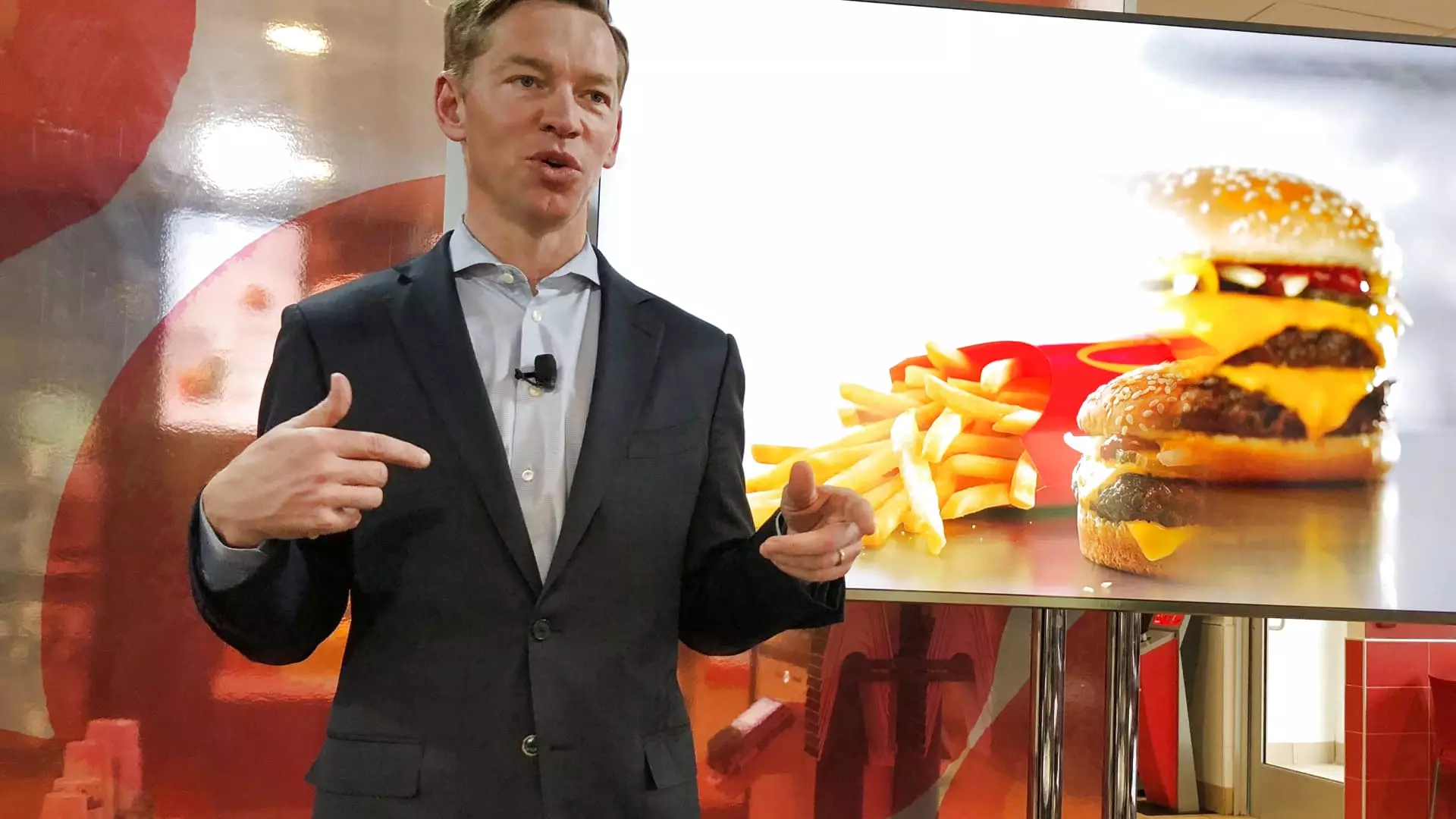In recent news, a health scare linked to E. coli contamination in McDonald’s famous Quarter Pounder burgers sent shockwaves through the fast-food industry and raised serious concerns among consumers. The outbreak, which led to 75 reported illnesses across 13 states and culminated in one tragic death, became a pivotal moment for the fast-food giant. As the company navigates the fallout, its leadership must tackle both immediate health concerns and long-term reputational risks.
During a conference call, McDonald’s CEO Chris Kempczinski expressed a sense of optimism regarding the resolution of the crisis, asserting, “we view it as being behind us.” While it is commendable for a CEO to project confidence to investors, it also raises questions about the sensitivity of such statements amidst ongoing investigations. The Food and Drug Administration (FDA) continues to probe the source of the contamination, focusing on slivered onions supplied to McDonald’s for their Quarter Pounders. This immediate pivot is crucial; McDonald’s has suspended sourcing from the implicated supplier and will serve the beloved burger without slivered onions in approximately 900 locations.
Despite the company’s hopeful stance, initial reports indicated a decline in foot traffic and sales after the outbreak became public knowledge. CFO Ian Borden reported that both daily sales and customer traffic dipped negatively in the wake of the announcement, underscoring the delicate balance between food safety and consumer confidence. The company is now faced with the dual challenge of recovering its lost sales momentum while ensuring that customers feel safe and secure dining at their establishments.
On a more encouraging note, McDonald’s has recently reported a slight uptick in third-quarter same-store sales, with a 0.3% increase compared to the previous year. This performance is particularly noteworthy as it marked a recovery from a decline in the second quarter. However, the figure still falls short of analysts’ expectations, demonstrating the challenges the brand faces in maintaining strong sales in key international markets while emerging from the crisis. Notably, the stock saw fluctuations, dropping up to 2.5% initially before regaining ground during the call, revealing investor uncertainty amidst ongoing challenges.
During the conference call, Kempczinski extended a heartfelt apology to customers affected by the outbreak, acknowledging the emotional and physical toll that foodborne illnesses can have. His empathy suggests an awareness of the human element involved in such corporate crises, though the sincerity of corporate apologies must be backed by resolute actions to regain trust. Offering “sincere and deepest sympathies,” he emphasized the company’s commitment to rectifying the situation; however, this requires ongoing transparency as well as robust measures to prevent future incidents.
The plight of the victims, including three legal suits filed against McDonald’s by customers affected by the outbreak, casts a shadow over the company’s public relations efforts. Legal repercussions can significantly influence the brand’s image and operational framework. Such situations often act as catalysts for broader conversations regarding food safety practices across the fast-food industry. It is now incumbent upon McDonald’s—not only to address these lawsuits but also to implement preventive measures that can bolster their food safety protocols to mitigate future outbreaks.
Moving forward, McDonald’s faces a daunting task: rebuilding consumer confidence while encouraging a return to previous sales levels. Strategies should include transparent communication about safety measures and a more cautiously optimistic approach to marketing the reintroduced Quarter Pounder. Moreover, McDonald’s must navigate the harsh scrutiny brought to bear by this latest crisis in an effort to sustain its longstanding market position and reinvigorate its brand loyalty among consumers.
The E. coli outbreak has posed serious challenges for McDonald’s. Its long-term success will depend on effectively managing the immediate fallout and instilling confidence in its patrons once again. The road to recovery will not only include restoring the Quarter Pounder to the menu but also a commitment to exemplary standards of food safety and customer care, which are paramount in the fast-food landscape.


Leave a Reply